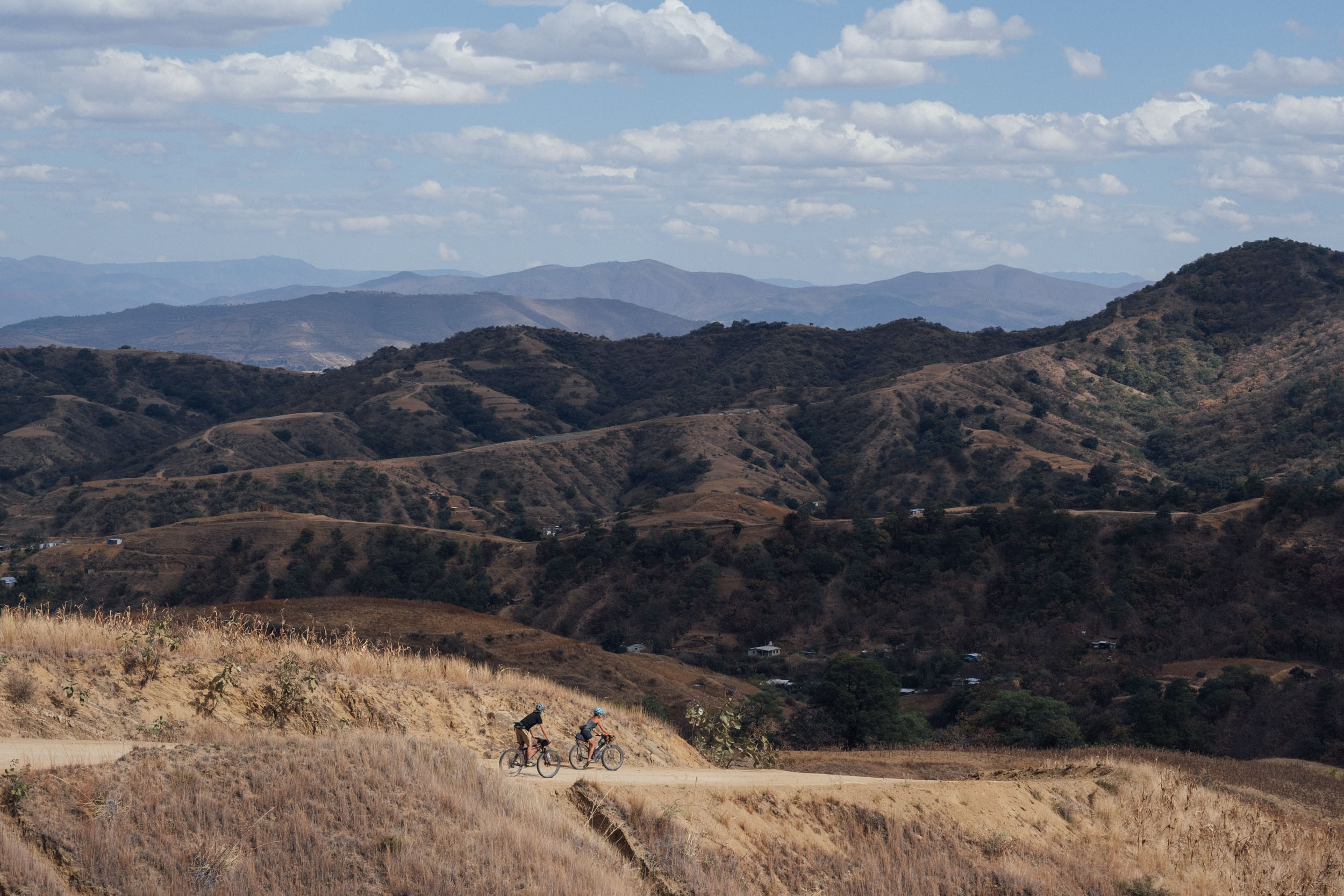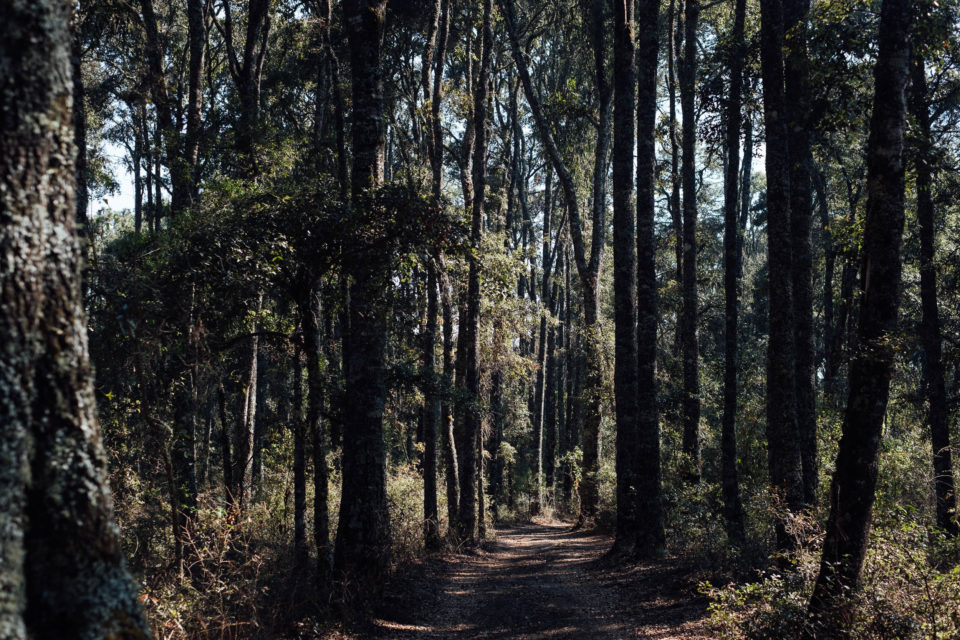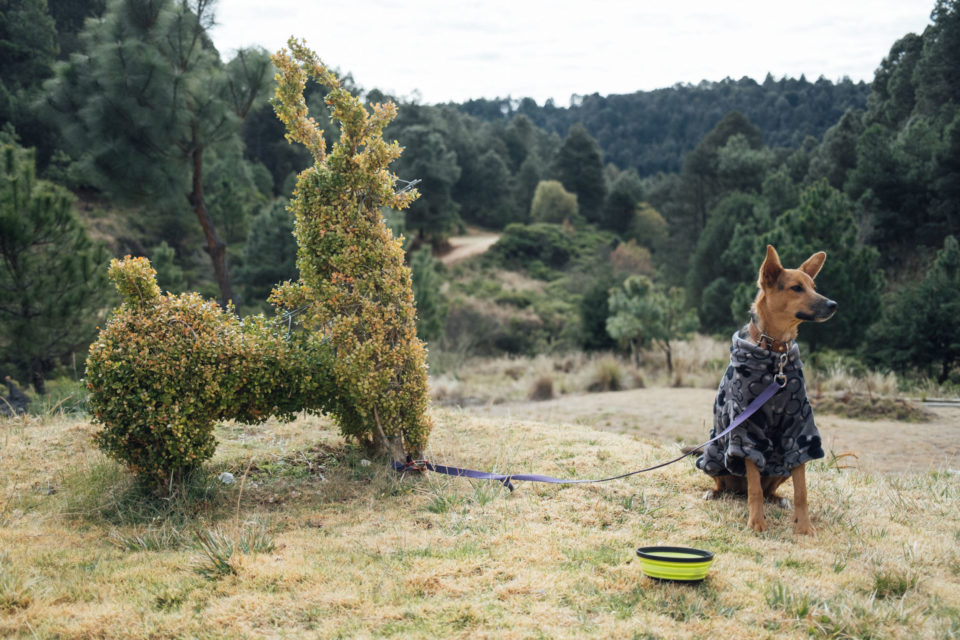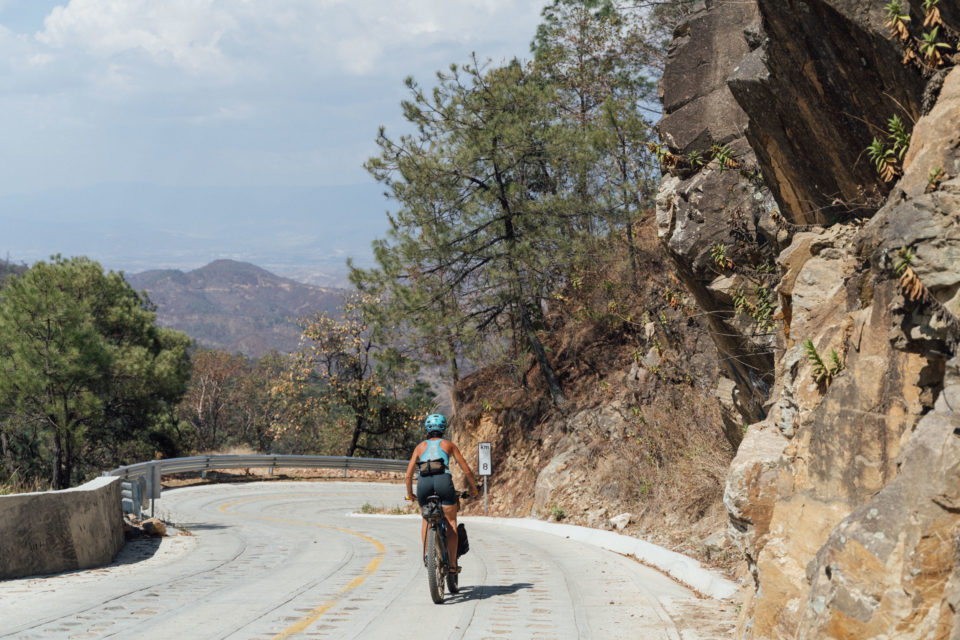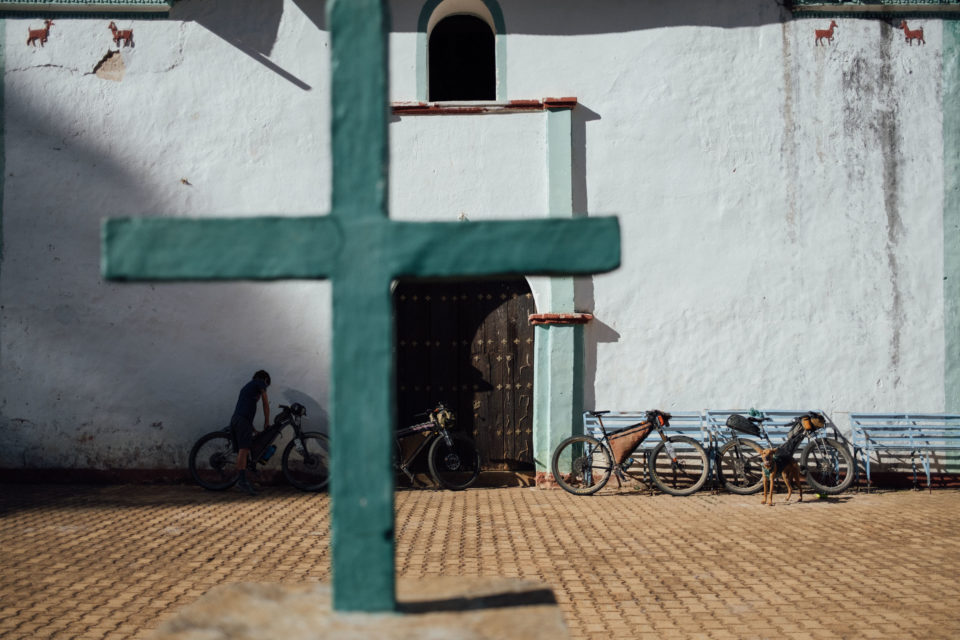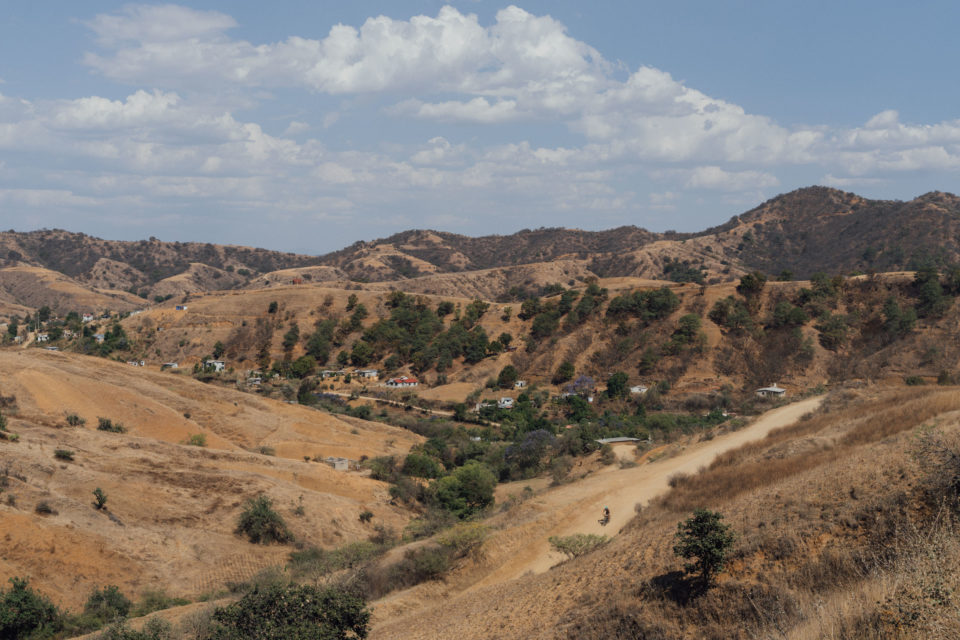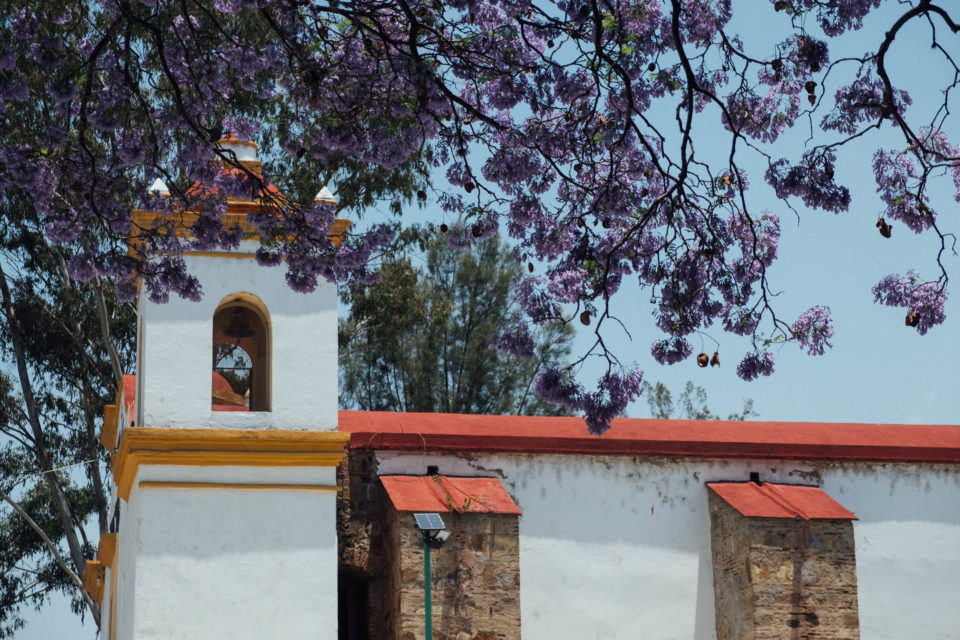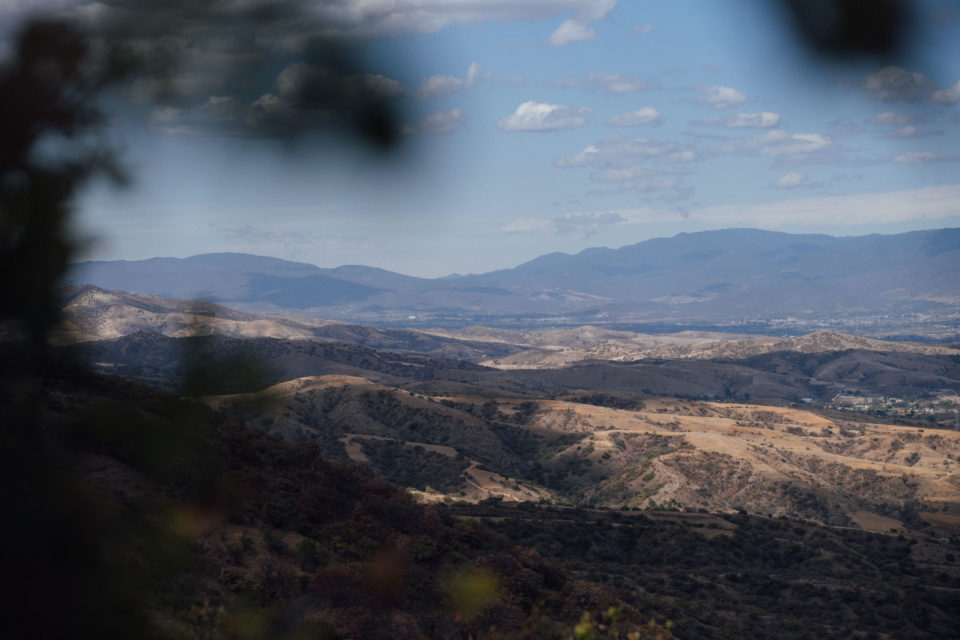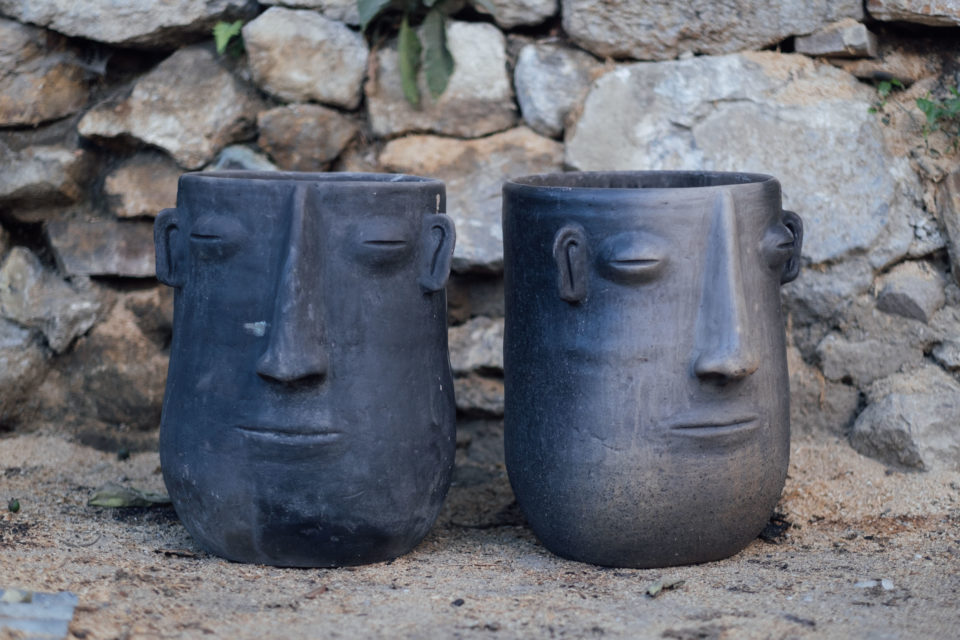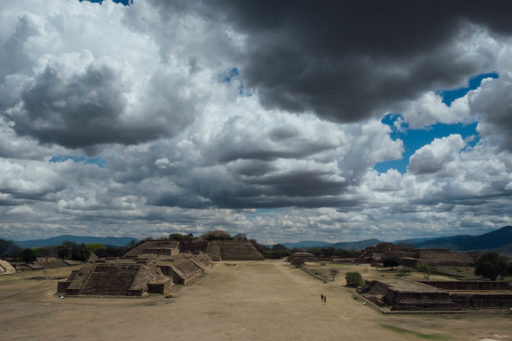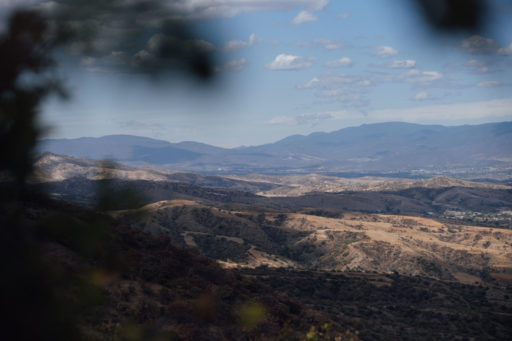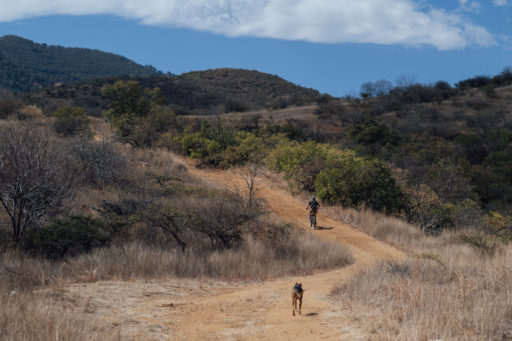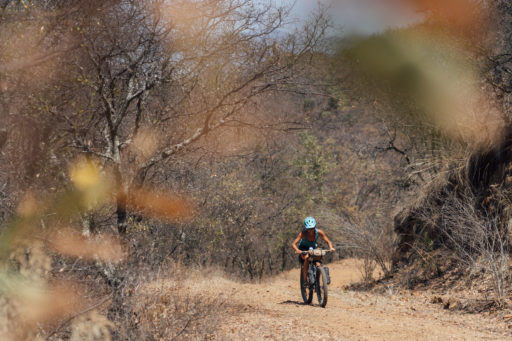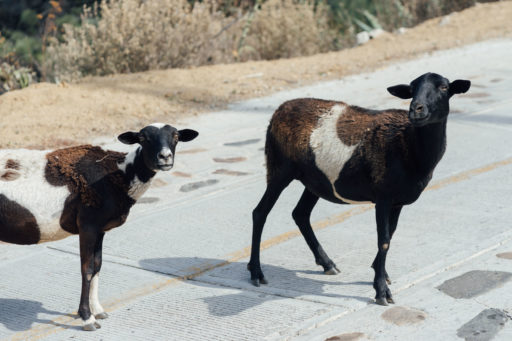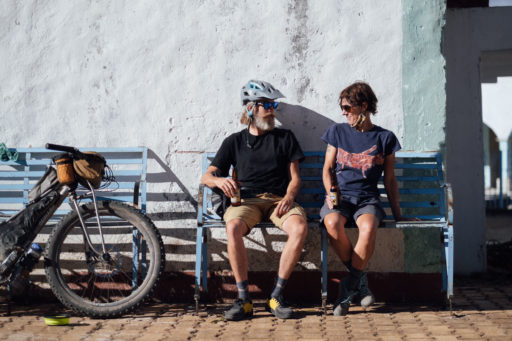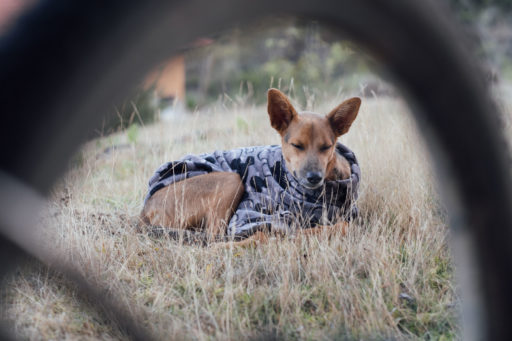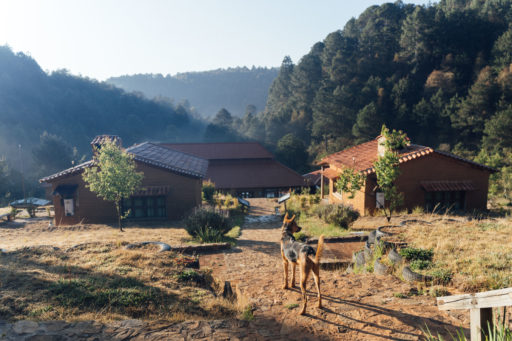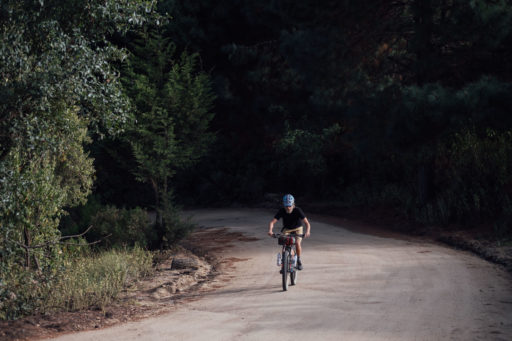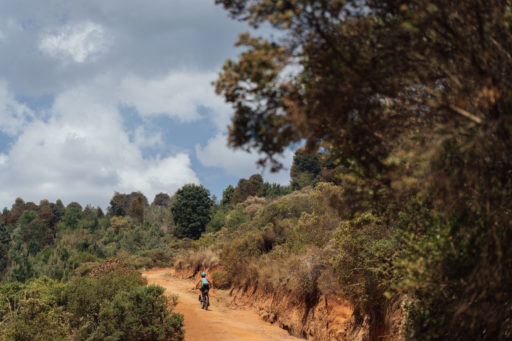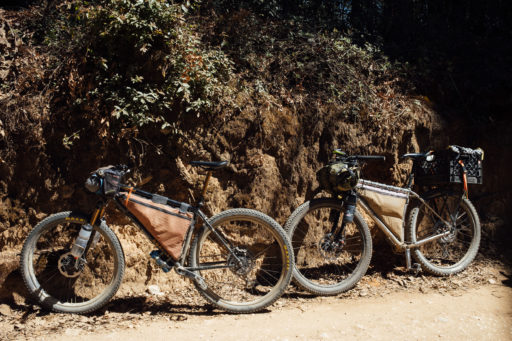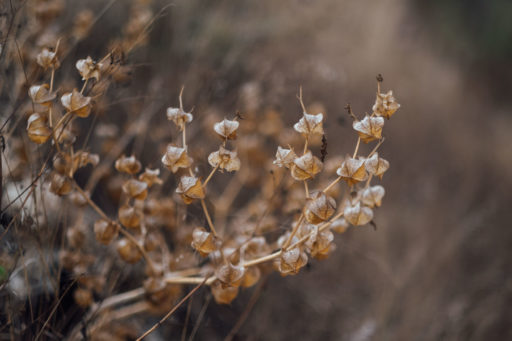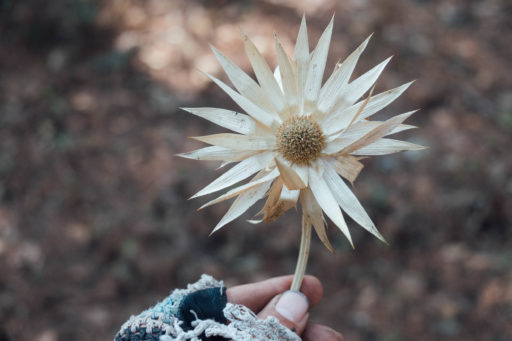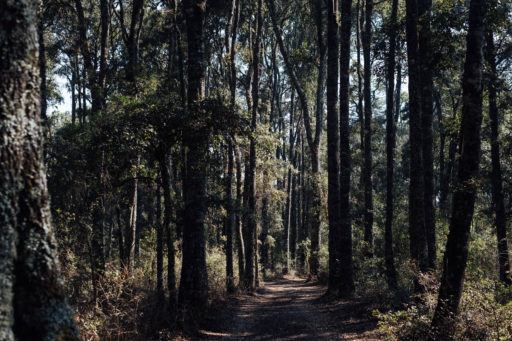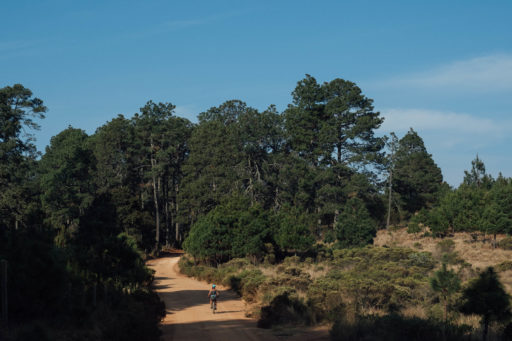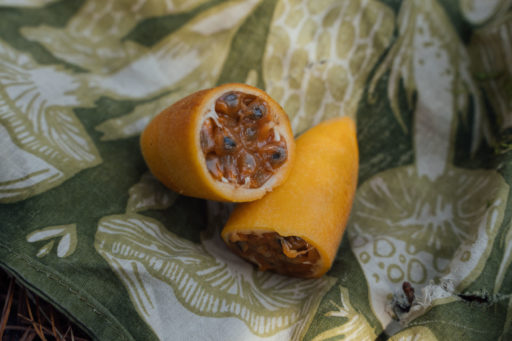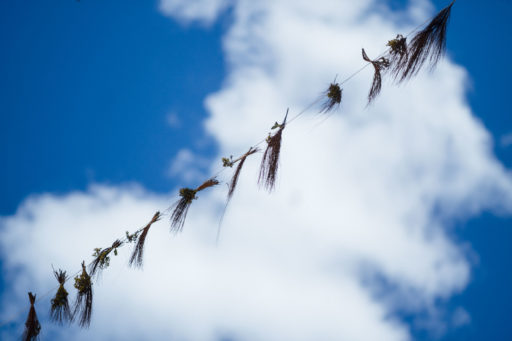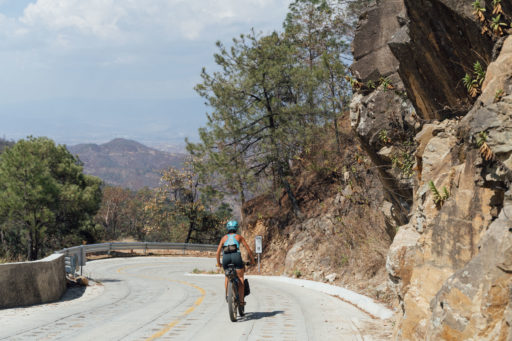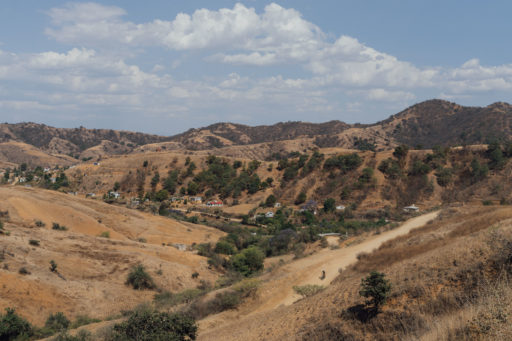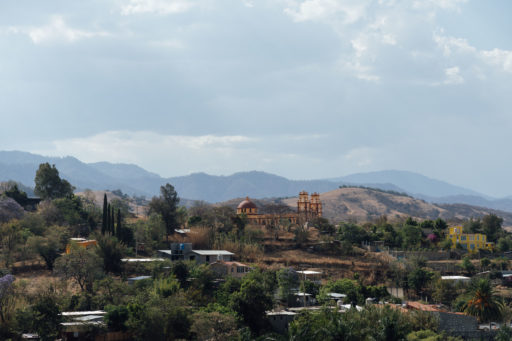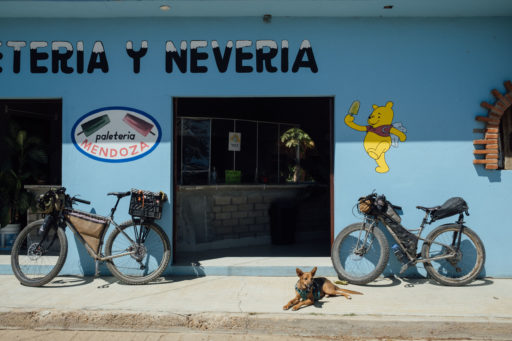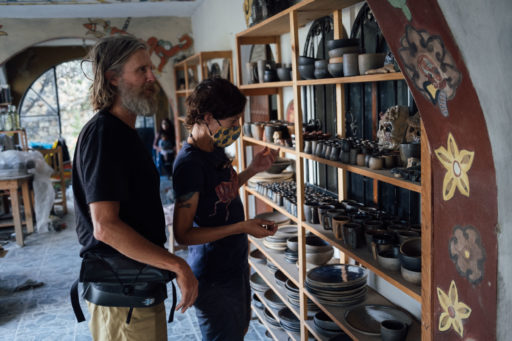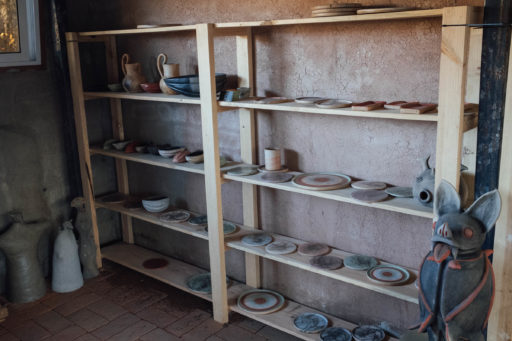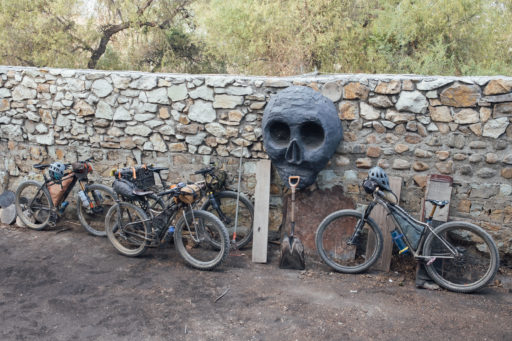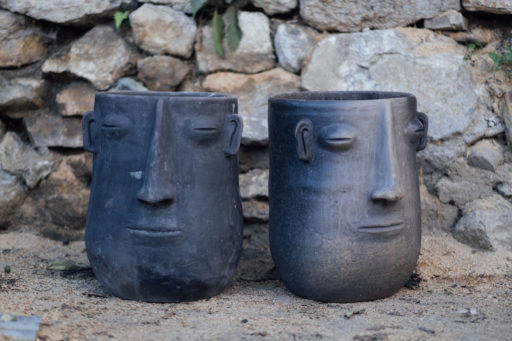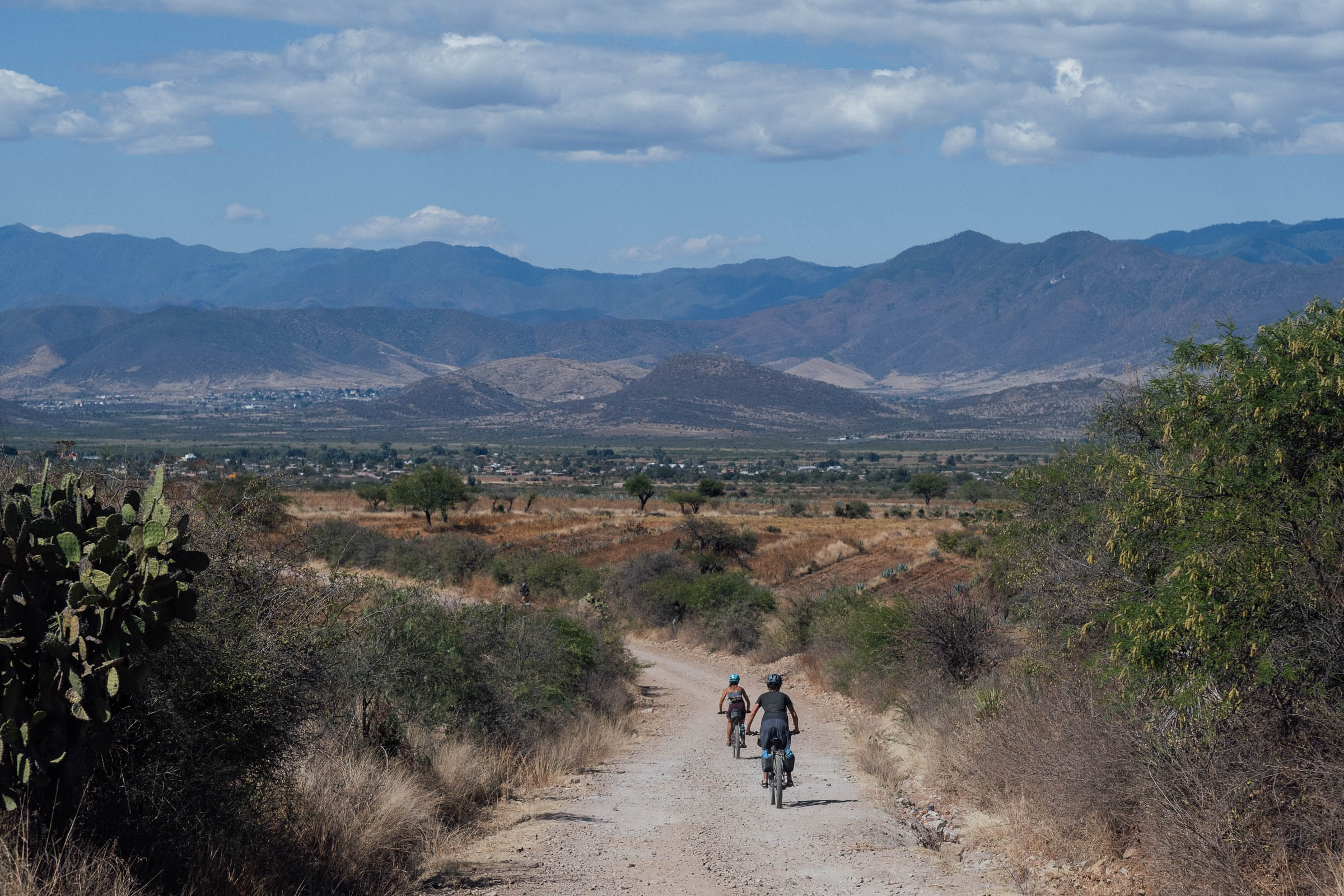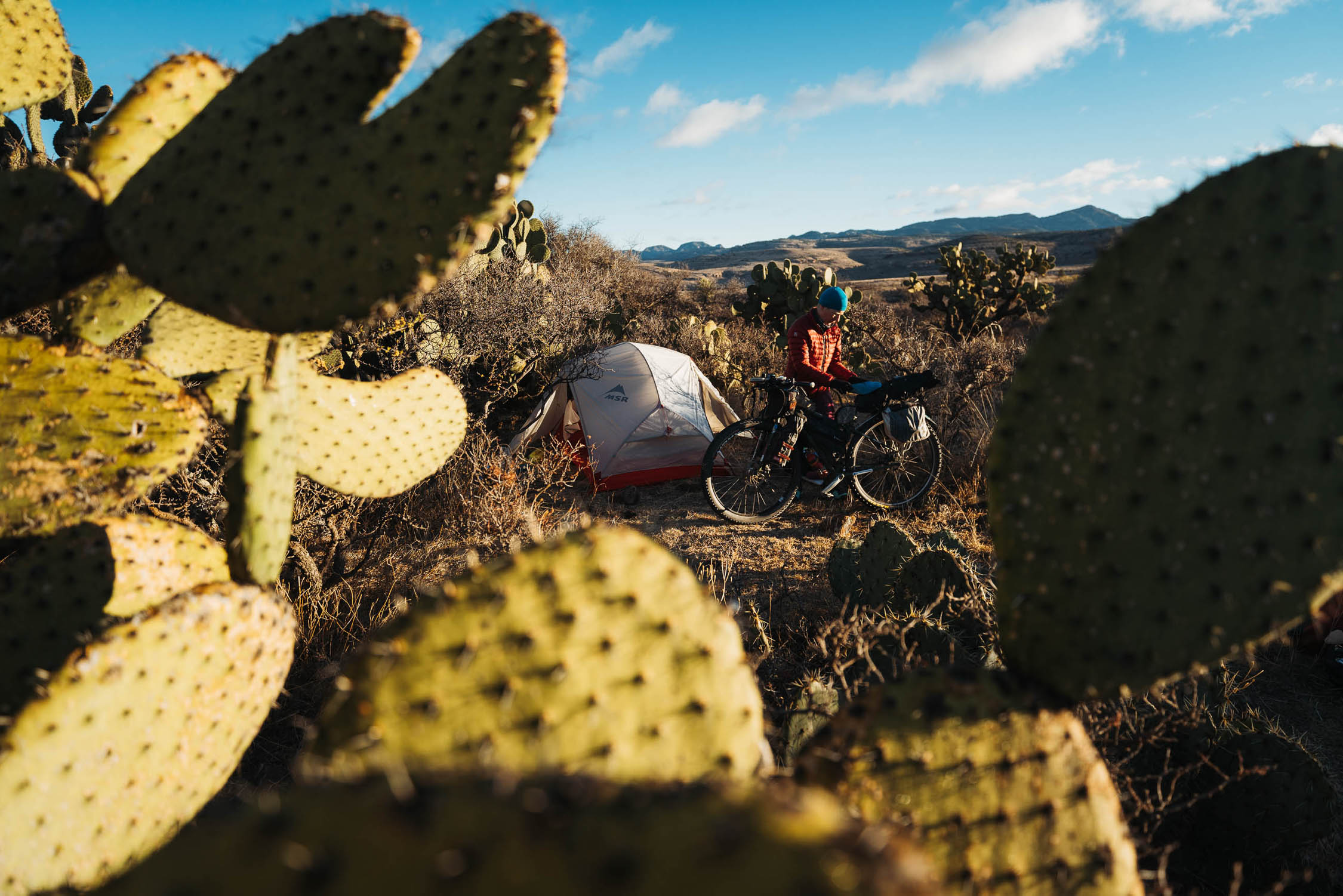Cuatro Venados Eco Overnighter, Oaxaca
Distance
62 Mi.
(100 KM)Days
2
% Unpaved
65%
% Singletrack
0%
% Rideable (time)
99%
Total Ascent
7,400'
(2,256 M)High Point
9,120'
(2,780 M)Difficulty (1-10)
7?
- 8Climbing Scale Strenuous119 FT/MI (23 M/KM)
- -Technical Difficulty
- -Physical Demand
- -Resupply & Logistics
Contributed By

Cass Gilbert
While Out Riding
A note on security: Sadly, there have been increasing reports of robberies in Oaxaca de Juárez, both in the city centre at night and on a few of the local trails during the day. If you’re out late, take a taxi home. In terms of riding, hiking, and running in areas close to the city, be especially mindful in Cerro del Fortín, the cross at Torre de Microondas, and the very top of the Libramento Norte (before the road drops down in Viguera, as used by some of our bikepacking routes and day rides into the Etla Valley). Keep an eye out, and don’t linger.
Complementing our recent Oaxacan valley rides, the Cuatro Venados Eco Overnighter is a chance for those with a tight time schedule to get a feel for Oaxaca’s surrounding mountains, with less of the physical commitment that’s associated with our routes in the Sierra de Juárez. Like the valley rambles we’ve recently posted – Meandros en Mitla and Excursiones en Etla – this is a route that can be enjoyed on your own bike or one that’s rented locally (see Must Know for ideas), especially if you intend to make use of the delightful adobe-brick cabañas above the small settlement of Cuatro Venados. If you’re dropping into Oaxaca on the Trans Mexico Norte, use this gpx file as a more dirt-spirited alternate into the city, now that the road from San Pablo Cuatro Venados has been concreted.
Like the finest Oaxacan rides, it includes more than ‘just’ beautiful and quiet dirt roads. For early birds, there’s no better way to begin your trip into the Sierras than with a visit to the wonderful Monte Albán archeological site. It’s well worth putting aside a couple of hours here – this former Zapotec metropolis is vast and complex, and offers glorious views of the surrounding Mitla and Etla valleys, including an insight into what’s in store for you that day.
Then, after wending your way along various dirt roads that course through Oaxaca’s surrounding settlements, the climb begins in earnest. Rarely used by vehicles, the terrain here is sometimes loose and rocky, so don’t feel bad if you need to take a breather and enjoy the sweeping views of the Sierra de Juárez that lie over your shoulder. Note that the images here are taken from a couple of trips during the dry season, hence the burst of bougainvillea and jacaranda colours. Expect the vista to be considerably lusher during and immediately after the seasonal rains.
Connecting halfway up the recently concreted road to the settlement of San Pablo Cuatro Venados (a popular destination at the weekend for Oaxacan cyclists), temperatures cool off as you hit higher elevations, and with them, the promise of shade from towering pine trees. Onwards and upwards, the village church, complete with four deer motifs, offers a promising opportunity to take another break before the road reverts back to dirt for the final half-hour climb to the actual eco-center, which is set at 2,400 metres (fresco, as people here might say). Built and run by the local community, this surprisingly large complex is a peaceful spot, complete with pine forests, a nearby waterfall, and all of Oaxaca’s usual (and biodiverse) suspects – think bromeliads, orchids, mosses, lichens, agaves, and mushrooms, especially in the rainy season.
There, you can either enjoy a grassy camp spot for the night or avail yourself of one of the adobe-brick cabañas that are set on the hillside. Either way, there’s affordable and hearty local food to be enjoyed in the comedor, and the promise of a silent night’s sleep (not always a given in Mexico).
Come Day 2, the loop back to town begins with a climb, then a traverse across a rolling, high elevation ridge. Unlike much of the riding in the Oaxacan sierras, this means you can actually enjoy the fruits of your toils, rather than diving straight back down again, as is so often the case in this rugged Mexican state. What’s more, the dirt road is almost completely traffic-free and passes by a number of agave fields and small settlements, with picnic spots a-plenty.
Shortly after El Portezuelo, a concreted descent finally plummets riders towards the valley floor once more. Sure, it’s quiet, largely traffic-free, and complete with grand views, but even so, those hooked on Mexican dirt need not fear. A short detour around Jalape del Valle offers one last dose of the good stuff before a network of rural roads of mixed conditions feeds bikepackers back into town. Those with the time, the energy, and the interest can round off this overnighter by lingering in Atzompa, perhaps even investing in some of the pottery for which this settlement is well known (or, when it’s re-opened, riding up to Atzompa’s own archeological site). Then, it’s just a short last run into the city, courtesy of the bumpy old railroad that once connected Puebla and Oaxaca, where I suggest a celebratory dinner should be enjoyed!
Difficulty: Logistically, this route is pretty straightforward. Food, drink, and peleta stops are frequent, and there’s no need to carry dinner or breakfast either. Still, there’s no denying that it’s a big climb to get up to the Sierras and the eco-center, and you may have to push in the odd place, depending on your tyres, legs and gears. Although Day 2 appears to be largely descent, those undulations do add up, especially down in the valley where it’s often hot and dry. You’ll also want to be a confident off-road rider; like much of of Oaxaca, the terrain can be very mixed in places. Despite the occasional steep pitch, this would make a good family ride too, or one to be enjoyed with your furry friend, as seen here. Thanks for the barks of encouragement, Huesos!
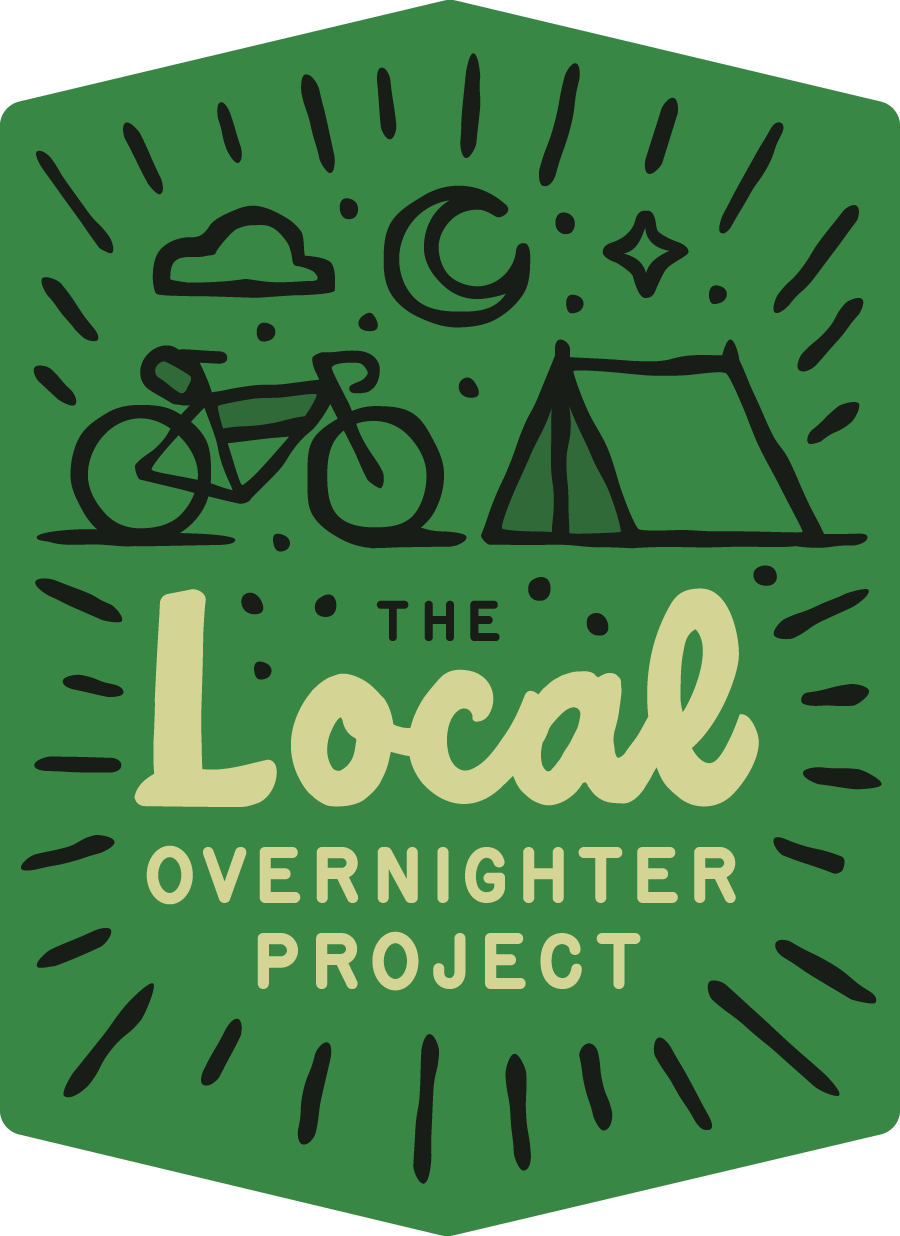 This route is part of the Local Overnighter Project, which was created to expand our growing list of worldwide bikepacking routes—the first and largest of its kind—and create an independent map and catalog of great bikepacking overnighters, curated by you, from your own backyard. Our goal is to have accessible routes from every town and city in the world. Learn More
This route is part of the Local Overnighter Project, which was created to expand our growing list of worldwide bikepacking routes—the first and largest of its kind—and create an independent map and catalog of great bikepacking overnighters, curated by you, from your own backyard. Our goal is to have accessible routes from every town and city in the world. Learn More
Submit Route Alert
As the leading creator and publisher of bikepacking routes, BIKEPACKING.com endeavors to maintain, improve, and advocate for our growing network of bikepacking routes all over the world. As such, our editorial team, route creators, and Route Stewards serve as mediators for route improvements and opportunities for connectivity, conservation, and community growth around these routes. To facilitate these efforts, we rely on our Bikepacking Collective and the greater bikepacking community to call attention to critical issues and opportunities that are discovered while riding these routes. If you have a vital issue or opportunity regarding this route that pertains to one of the subjects below, please let us know:
Highlights
Must Know
Camping
Food/H2O
- Beginning the route with a visit to Monte Albán, the pre-Colombian, Zapotec metropolis
- Keeping largely to low-traffic, and traffic-free rural and mountain dirt roads
- Classic Oaxacan biodiversity, given elevations that range between 1500m to 2800m
- A night in a Paraisos Indegenas eco-center, where the money you spend goes directly to the community
- Visiting Atzompa on your way back into town, famed for its tradition ceramics and its own Zapotec archeological site
- Best bike: A rigid mountain bike or hardtail with a 2.3″ to 2.6″ tyre is the best steed for this route, due to the mixed terrain, the extended climbs, and the often steep grades. Still, because there’s nothing ‘technical’ along the way in terms of terrain, a traditional tourer works well too. If you’re aboard a gravel or drop handlebar bike, be sure that your gearing is as low as that of a mountain bike, fit the widest tyres that you can, and expect to be jostled around at times. Whatever bike you choose, pack light, as there’s a lot of climbing to contend with.
- Best time of year: Oaxaca is a popular destination throughout the year, with November to February being the high season. Bear in mind that during the dry season (November to April/May), dirt roads become increasingly dusty and temperatures soar as the months go by – especially as you descend in elevation. By April, the landscape also becomes increasingly dull and brown. In contrast, the rainy season (May to October) brings lush countryside and more bearable midday riding temperatures, but expect heavy later afternoon or nightly downpours. Thankfully, rain in the mountains of Oaxaca is rarely an all-day affair, unless there’s a storm system lingering on the Pacific coast or the Gulf of Mexico, in which case it can be rainy and overcast for a few days. Mid October through January are probably the best times to ride here, as the landscape is still green, the heaviest rains have passed, and the temperatures aren’t yet oppressive – within these months, November is perhaps the best. You could even tie in a trip with Día de Muertos, though book accommodation in advance as everywhere is especially busy over this celebratory period.
- Speaking of the rainy season, it can be worth bringing a light piece of tarp to protect your bike’s chain from rusting at night. Storm systems aside, rains mostly come in the late afternoon or at night, so don’t tend to get in the way of enjoying your days in the saddle. The rainy season has its own charms, including epic skies, storm-racing, and the chance to forage for mushrooms.
- Speaking of the dry season, be prepared for extremely high daytime temperatures (35C/95°F) in the valleys and balmy nights. Humidity also increases towards the coast. You’ll need to get early starts and carry extra water.
- It can be chilly camping out at 2400m so bring extra layers, like a wooly hat, leggings, and a fleece. If you’re staying in a cabaña, it’s possible to have a fire if you’re really feeling it.
- Ideas for a packlist? Check out this post. There are various additional notes on the area, too, so it’s worth reading even if your packlist is dialed.
- Mushrooms are most plentiful from July to September, though the season does extend into October and even November too. Oaxacan mushroom guru Osvaldo Sandoval’s Instagram is great for ideas and inspiration.
- Safety: Generally speaking, the mountains of Oaxaca are a safe place to travel through, but it’s always worth seeking up-to-date information and taking extra care within the capital.
- Many of these dirt roads see little travel – a wave and a friendly greeting go a long way within the small Zapotec communities.
- To find out what events are being held in the city, follow the Que Pasa Oaxaca Facebook page. They also publish an occasional digital magazine on the Issuu platform.
- To learn more about Oaxacan textiles, check out the excellent Museo Textil de Oaxaca. It’s in a beautiful building, it’s free to enter, and exhibitions are constantly changing. Housed in a former convent that dates back to 1529, the neighboring Centro Cultural San Pablo is also well worth checking out.
- Want to get into the botanical groove? Oaxaca is the perfect destination to bring out your inner phytophile. Visit the renowned Jardín Etnobotánico
de Oaxaca for a plant primer before you set off. There are 2 hour, guided tours in English and Spanish. Download iNaturalist on your phone and go plant (and insect) wild. - Background reading: Oaxaca Journal by Dr. Oliver Sachs, is a highly recommended read for those interested in learning more about the area, from both a botanical and cultural standpoint.
- Nearby trails: A short ride from the city centre, the trail network west of San Felipe Del Agua has a network of roughly cut, cross-country singletrack – see Trailforks for details. The Escalones trail, as an out and back, is especially recommended.
- Enduro scene and bike guides: There is also an abundance of steep cross country and techy enduro trails in the area, especially up in the Ixtepeji and La Mesita zones. Again, see Trailforks for details or check out our Hebras to Ixtepeji route, which makes a great singletrack complement to this loop, assuming you have an appropriate bicycle. Otherwise, there are a number of tour agencies that can supply full-suspension bikes and take you up there for the day, like Coyote Adventuras, Trans Sierra Norte, and Bicicletas Pedro Martinez. For a private shuttle into the high country, Hugo Yovaneli may be able to help (WhatsApp +52 1 951 115 5160). Coyote and Pedro Martinez also offer more mellow tours around the valleys too.
- Bike shops: Bicimundo and Zona Bici are well stocked and both have shops in Reforma, which are recommended over their branches in the city centre. Expect to find sealant, modern drivetrain components, and a reasonable selection of mountain bike tyres, right up to 29 x 2.5/2.6″ sizes.
- Bike rentals: Aside from the full-suspension bikes provided by tour companies for their enduro tours, Bicicletas Pedro Martinez is probably the best place to rent a bike suitable for dirt road riding here. A decent Orbea hardtail costs 500 pesos for 24 hours. Otherwise, pop by Bicibella Oaxaca, below Coyote tours. They may be able to set you up with something too.
- Resources: MTB Oaxaca is an excellent website that lists bike shops, trails, and day rides in and around Oaxaca. Thank you Larry!
- El Día de Muertos: Consider timing your trip with Oaxaca’s famous festival and ceremony (early November), but book accommodation in advance as things get especially busy at that time of year.
- Buses: Oaxaca is a six-hour bus ride away from Mexico City. ADO is a recommended bus company and generally has room for a bike or two. You may need to remove the front wheel and drop your seat post.
- Flights: Volaris, AeroMexico, and a number of other airlines fly to Oaxaca via Mexico City or Guadalajara. There are some direct flights to LA, too. Airlines invariably have different bike policies – cost/size/weight – so always check ahead. I like to travel with a compact bicycle bag – like the Tardis from Ground Effect – as it fits into smaller taxis and is easier to store in a hotel or hostel.
- Transportation to and from the airport: Depending on the size of your bike boxes, it’s likely to cost between 350 and 500 pesos for a taxi from the airport into town – for 2 to 3 people with bikes. You can buy tickets for the official airport taxis when you arrive (just by the exit), and it’s all regulated. If you have a small bike bag, you can likely fit it into the colectivo minibus, which drops its passengers off at their various destinations. For your return, download the Didi App on your phone (pay the driver directly), or arrange a shuttle through your hotel. To arrange a van suitable for larger numbers of riders, Taxi Oaxaca may be able to help (+52 1 951 200 6878).
- Ecoturismo Cuatro Venados can be contacted via their Facebook page.
- Camping is available for 100 pesos per tent at the eco centre, or you can treat yourself to a cabaña. The cost varies depending on numbers. If you’re two visitors, it’s 300 pesos (approx $15) per person, and if you’re four, it’s 250 pesos (approx $12.50) per person.
- Food and water is rarely an issue on this route. See map for more detailed suggestions.
- Carry extra water for the climb in the dry season – a capacity of 4L is recommended.
- A post-ride recommendation in Oaxaca? Check out La Popular for a beer or two, and good local food. The wild mushroom (setas) and garlic dish is especially good.
- Calle de General Porfirio Díaz, in Oaxaca City, is becoming quite the street for locally run, ‘new wave’ but affordable Oaxacan fare. From the end closest to the centre, the Boulenc ’empire’ includes an incredible bakery, a fantastic restaurant and coffee shop, and a grocery store (Suculente) with all kinds of bottled, homemade delights. Further up the street, Hierba Dulce is an excellent vegan restaurant with a broad menu of traditional dishes. Further up the street still, look out for Pan Con Madre, another excellent spot for bakery products. Next up is the excellent Mercado Sánchez Pascuas market, which has a bulk store downstairs, as well as great produce. Vegetarians will love the small, hole-in-the-wall ‘Casuelas’, a block past the excellent Mercado Sánchez Pascuas. A few steps beyond lies Macha Pacha, which sells artisanal chocolate in compostable packaging. The owner is a keen cyclist, too.
- Want to really treat yourself? Dive down the Oaxacan foodie rabbit hole by checking out the following world class restaurants: Crudo, Restaurant Alfonsina, Criollo, Agua Miel, Levadura de Olla, Origen, Hotel Sin Nombre, Teocintle, and Casa Oaxaca. You’ll need to book in advance for all of these places. My personal favourites are Levadura de Olla and the seasonal Agua Miel.
- For a great market to try all of Oaxaca’s regional cuisine, head to Mercado Organico La Cosecha (C. Macedonio Alcalá 806), where a number of small stalls will entice you with their delights. Outside seating. This place really is one of Oaxaca’s gems and is highly recommended. Open Weds-Sunday.
- Coffee? Oaxaca has you covered! Coffee is grown in the state and roasted locally. There are far too many coffee shops to recommend, but try out Café El Volador, at the beautiful Plaza de la Cruz de Piedra, to get you started. The square is a great spot to hang out after a day ride, too.
- Over the highway in Xochimilco, Rupestre has a lovely courtyard and especially strong americanos – there’s room for bikes too – or there’s the roof terrace at AM Siempre (great gluten-free chocolate cake) next door. Nearby Chepiche (look it up on Googlemaps, as it’s not signposted from the road) is one of my favourite hang out spots in town- it’s super spacious, there’s outdoor seating, it’s great for a breakfast, and again, plenty of room for bikes. Ancestral, also close by in Xochimilco, is a restaurant serving beautifully presented, traditional Oaxacan fare.
- To find out more about the culinary fare for which Oaxaca City is known, check out the Netflix series Street Food Latin America. It focuses on local legend Doña Vale and the region’s famous recipes.
- Pop into one of the many mezcal specialists or stop along the roadside and try the local tipple, distilled from agave (maguey) plants. There are many subtleties to mezcal, depending on the agave, where it’s grown, and how it’s distilled. If you want to dive deep into the mezcal-tasting experience, Mezcaloteca, in Oaxaca city, comes highly recommended, as does El Destilado.
- Talking of mezcal and popping, Mezcalite POP! (C. Porfirio Díaz 404), is a paleteria with a difference. Recommended for ice cream enthusiasts especially.
- Visit any market for a wide variety of fruit and fruit shakes, a great start to the day. ‘Verde’, laced with celery, grapefruit, and parsley is a personal favourite. The main Oaxaca market, behind the zócalo – Mercado Benito
Juárez – is always a hive of activity and a great place to explore on foot. - Cacao plays an important role in Oaxacan food and the state Oaxaca is well known for its chocolate. It’s either melted with cinnamon and sugar into Oaxacan hot chocolate – traditionally served without milk – or made into a delicious mole, which can be found on every restaurant’s menu.
- Agua frescas are the drink of choice in Mexico and way better than Coca-Cola. Choose from jamaica, horchata, and tamarindo, along with whatever fruit is in season – mango, papaya, or guava. Where possible, buy soft drinks in glass bottles as these are both re-used and more easily recycled than plastics.
- Tejate, a pre-hispanic energy drink made from maize and cacao, and tepiche, made from fermented pineapple, are two other excellent local drinks to look out for. It’s available all around town and in a number of villages in the Mitla Valley.
- Eat meat? Or rather, insects? Grab yourself a bag of chapolines – grasshoppers seasoned with lime, salt, and garlic – and sprinkle them on your food or just enjoy them for afternoon nibbles.
- Paletas! Mexico’s classic ice cream on a stick tastes especially good after (or during) a long day in the saddle. A particularly good example, Paletas Mendoza, is marked on the map.
Terms of Use: As with each bikepacking route guide published on BIKEPACKING.com, should you choose to cycle this route, do so at your own risk. Prior to setting out check current local weather, conditions, and land/road closures. While riding, obey all public and private land use restrictions and rules, carry proper safety and navigational equipment, and of course, follow the #leavenotrace guidelines. The information found herein is simply a planning resource to be used as a point of inspiration in conjunction with your own due-diligence. In spite of the fact that this route, associated GPS track (GPX and maps), and all route guidelines were prepared under diligent research by the specified contributor and/or contributors, the accuracy of such and judgement of the author is not guaranteed. BIKEPACKING.com LLC, its partners, associates, and contributors are in no way liable for personal injury, damage to personal property, or any other such situation that might happen to individual riders cycling or following this route.
Further Riding and Reading
Here are some connected/nearby routes and related reports...
Please keep the conversation civil, constructive, and inclusive, or your comment will be removed.






